“Nothing like it could be seen in England, either for the light of its glass windows, the gleaming of its marble pavements, or the many-colored paintings which led the eyes to the paneled ceiling above.” – William of Malmesbury, 12th century, English Historian
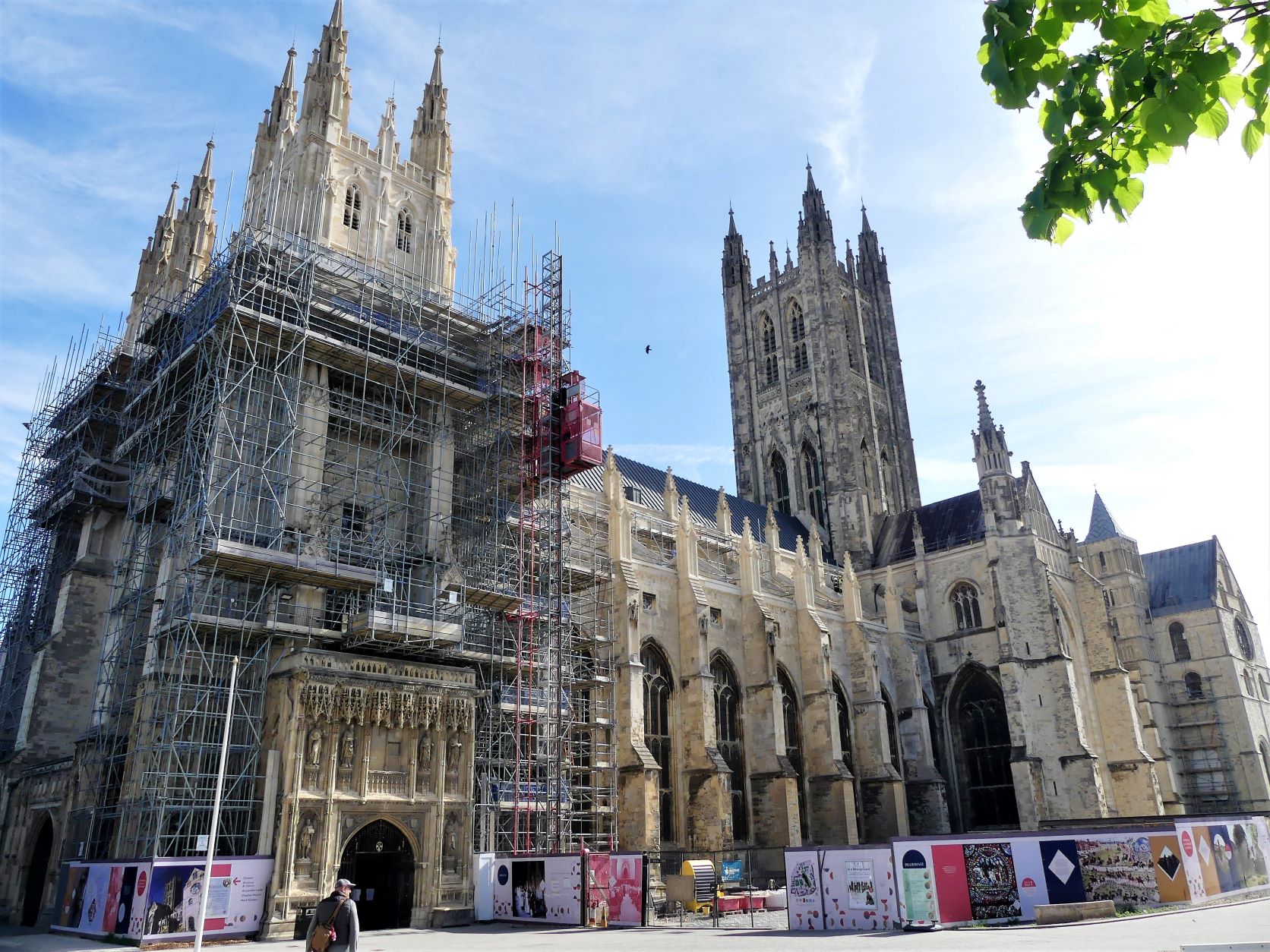
In all my world travels visiting renowned churches, walking into the Gothic behemoth, Canterbury Cathedral, was a totally OMG moment; instantly taking my breath away. Words are difficult to describe the immensity and grandeur, looming over Canterbury and its great influence in churchdom.
The Cathedral is one of the oldest and most well-known Christian structures in England; and part of a World Heritage Site. The Archbishop resides here, currently Justin Welby, leader of the Church of England and symbolic leader of the worldwide Anglican Communion.
It was the opening hour, with morning light streaming through its enormous, magnificent stained-glass windows; some of which are the earliest medieval in England. The richly embellished interior had an aura of peacefulness. The only other sound heard was your own breath and footsteps.
Suddenly, a loud, booming blast struck like a massive tsunami, as the enormous organ began playing, awakening the 1,425-year-old institution from its Crypt to its lofty rafters. Early-birds are treated to the thunderous, deep bass tones. Eerie and chilling, I got goosebumps, my eardrums got woke, striking my core and permeated my soul, all probably meant to be. Wake all ye sinners!
Once the sound of silence returned, a bishop began his short recital of the Lord’s Prayer, welcoming a small circle of the devoted. I found myself reciting along except for the ending, for as a Catholic, we end with, “…deliver us from evil.” The Protestants end with, “…For thine is the kingdom …,” hence we didn’t sync in our endings.
Heading deeper into the heart of the long corridors of the cloister, in awe of its grandiosity; I’d imagine the monastic, sacred lives of the monks. Sadly, much of the stonework is damaged and crumbling, the roofs are leaking and much of the stained glass is badly corroded. Wouldn’t you be a bit sagging after a thousand years?
There’s a big program underway on conservation and restoration. Donations and gift shop souvenir sales help contribute to the funding. Our contribution was a blingy Christmas ornament to add to our collection, featuring the likeness of the Most Revd. Justin Welby. The store’s clerk cheekily told us that the Lord Archbishop highly approves it.
Founded in 597AD, the cathedral became a major center of medieval pilgrimage following the 1170 martyrdom of Thomas Becket (aka Saint Thomas of Canterbury). Within three years, he was declared a saint by the Pope. A shrine was built to him and the journey of pilgrims serves as the framework for Geoffrey Chaucer’s 14th-century classic, “The Canterbury Tales.”
Becket’s martyrdom became a pivotal moment in the cathedral’s history, being the site of his murder in 1170. King Henry II had frequent conflicts with the strong-willed Becket and is said to have exclaimed in frustration, “Will no one rid me of this turbulent priest?” Four knights took this literally and murdered Becket in his own cathedral; even today, there’s still debate, “Did the king order a hit on his best friend?”
The cathedral was expanded after Becket’s assassination to accommodate the flow of pilgrims to his shrine, considered to be a place of healing. Sales of pilgrim badges depicting Becket, his martyrdom or his shrine all contributed to the expansion.
During the topsy-turvy upheaval of 16th-century Reformation period, Becket’s shrine was destroyed; some say by King Henry VIII in 1538. The king had summoned the dead saint to court to face charges of treason. Of course, having failed to appear (Hello?! He was long dead), he was found guilty in absentia; the shrine was destroyed, and its treasures were confiscated and carried away. I guess Henry the VIII had to find some other distraction, not being kept busy enough dealing with his troublesome and legendary six wives. You know the score, “Divorced, Beheaded, Died, Divorced, Beheaded, Survived!”
Now overwhelmed with visions of ecclesiastical grandeur, we meandered along the narrow streets and alleys of the historic town center; admiring a mixed-bag’s worth of centuries old architecture: Tudor, Elizabethan, Baroque, Georgian, Victorian, Edwardian, Art Deco and Modern. One wonders as you wander along from building to building, what era am I in now?!
The Crooked House, on Palace Street, is from the 1600s, and makes for a very odd sight, leaning precariously towards the street. “A very old house bulging over the road … leaning forward, trying to see who was passing on the narrow pavement below …” – Charles Dickens, 1849.
Speaking of Dickens, it was teatime and we had a proper and traditional Afternoon High Tea at Tiny Tim’s Tearoom; featuring a 3-tier tray full of wonderful delicacies. The Sultana Scone overshadowed everything else provided. We became avid tea drinkers throughout our trip; ‘tis quaint and civil; warms the soul.
Canterbury was once a fully walled town. We took a stroll under the medieval gatehouse and tower, Westgate, dating from the 1300s; the last surviving city gate and largest in England. It led us right into the well-manicured floral gardens along the canal. Soon thereafter, we’d be gliding along a canal in a rowboat flanked by buildings from a long by-gone era, with wildly blooming wisteria flowers dripping from its banks.
England is bursting with spring floral blooms all over: tulips, violets, primroses, irises, rhododendrons, etc. In fact, the famous Chelsea Flower Show was scheduled for month’s end (that’s a future trip).
Glorious Canterbury has been voted 5th best place to live in the UK with its architectural and natural beauty. It was not unnoticed.
Up next … Dover Castle
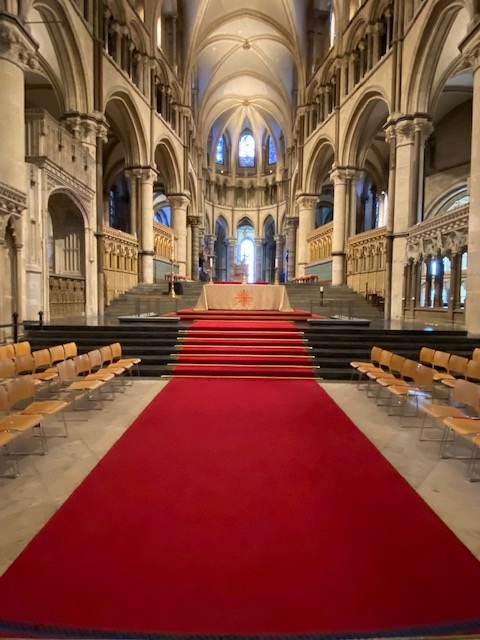
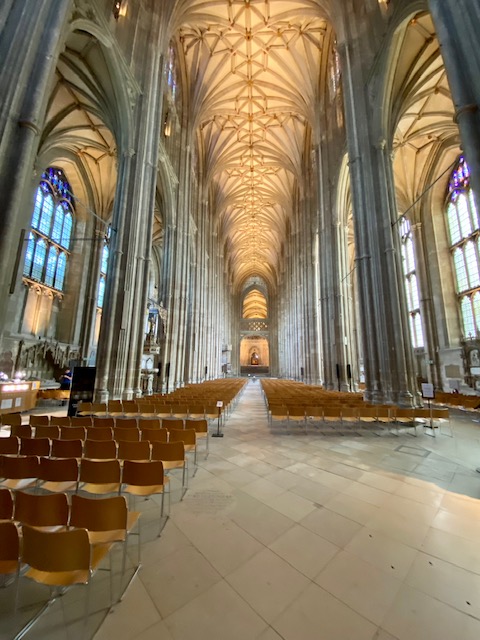
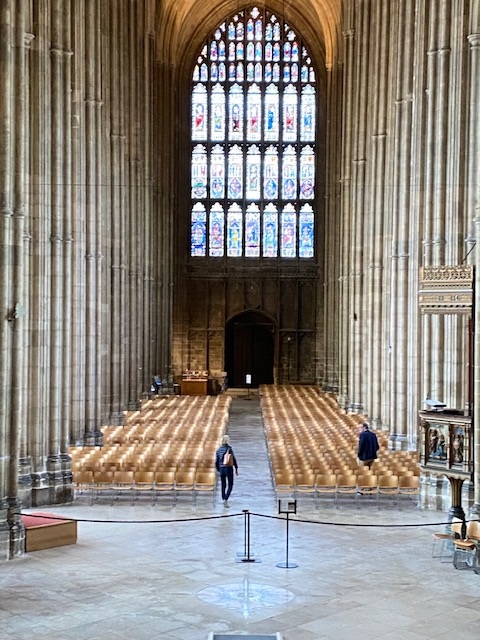
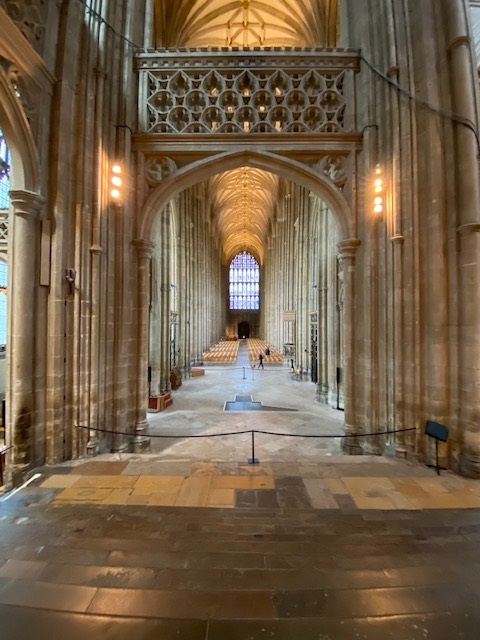
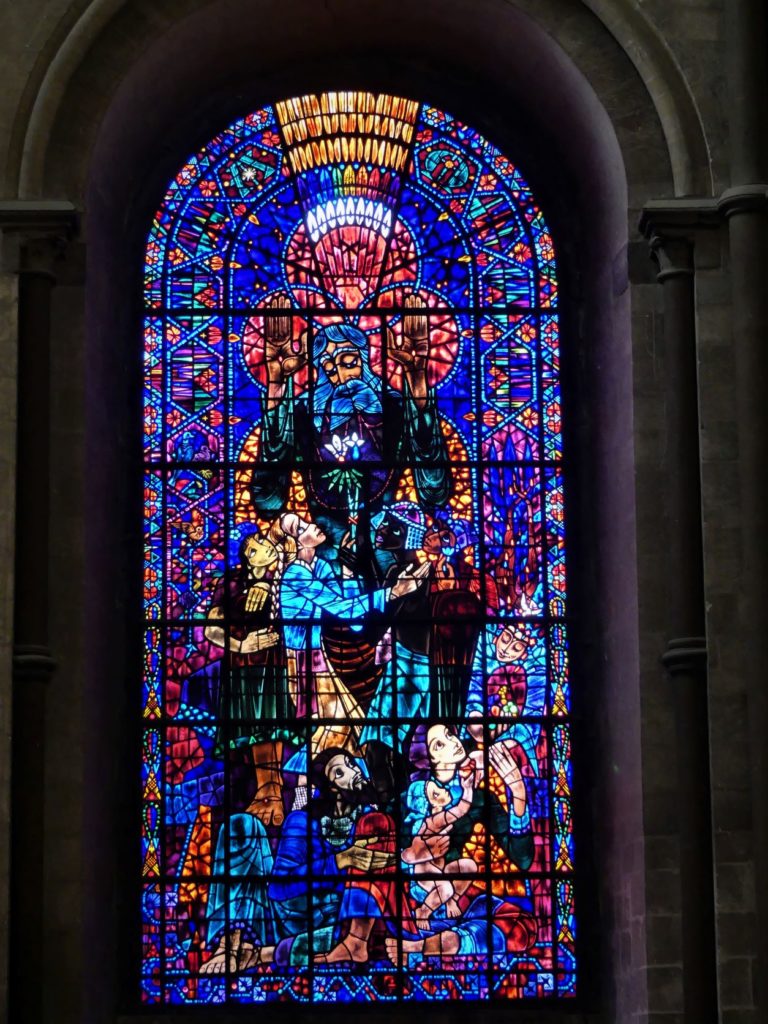
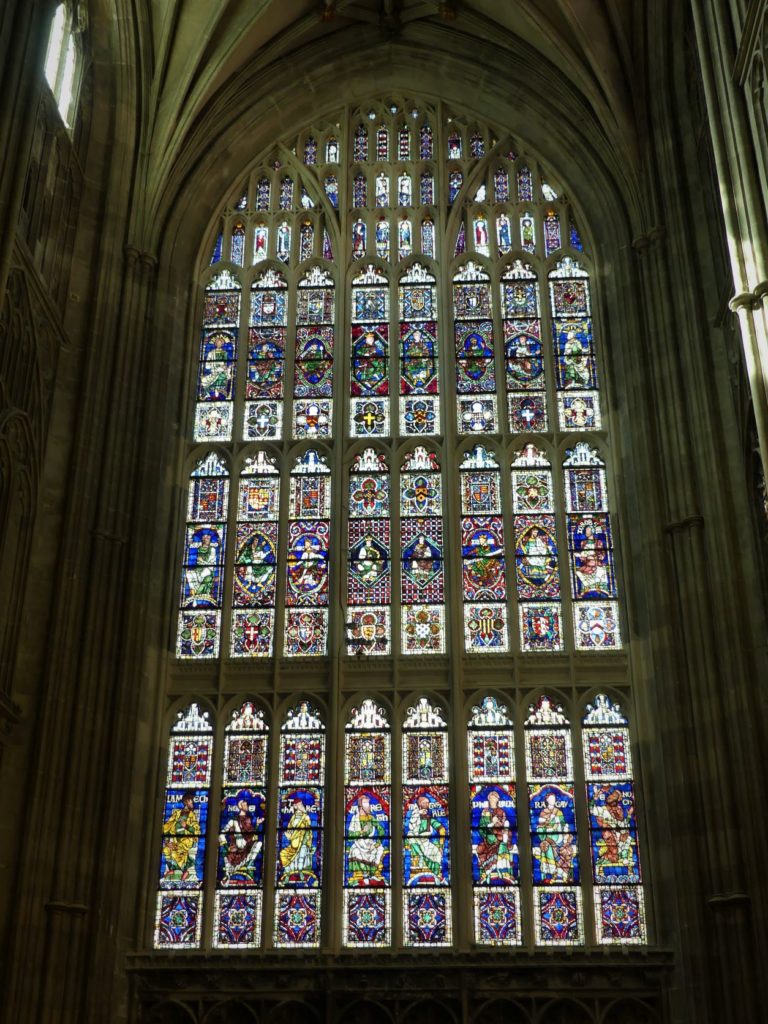

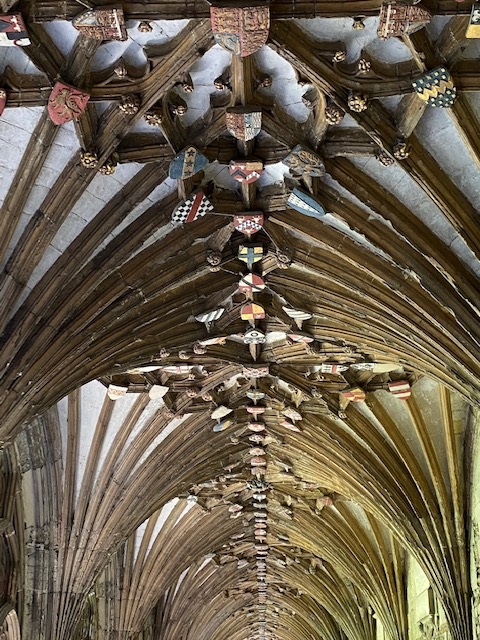
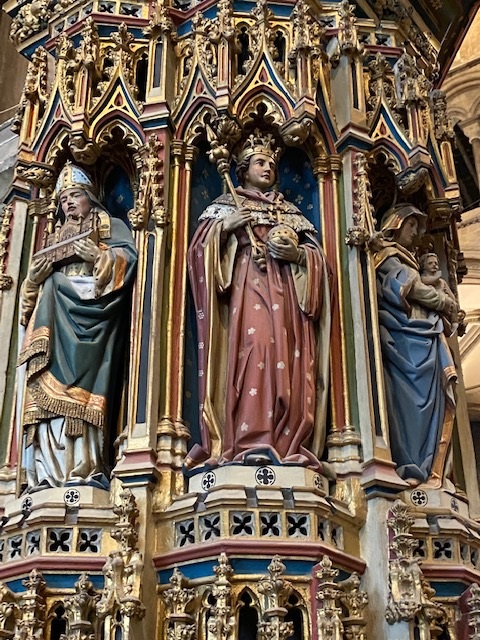

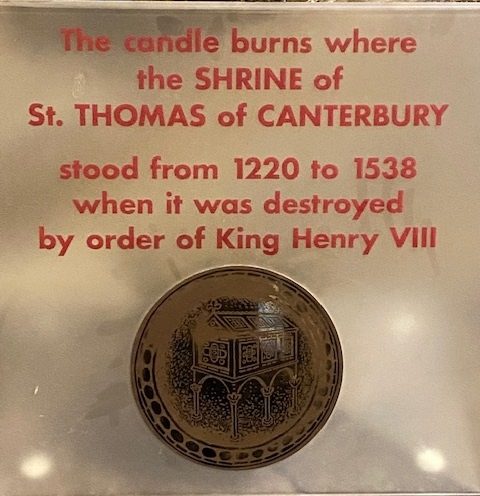
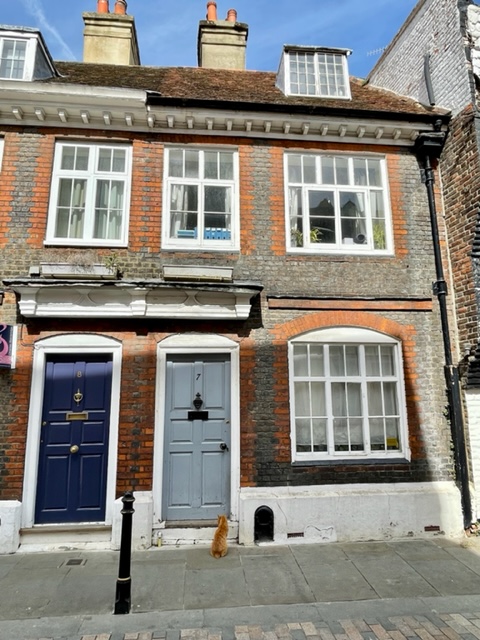
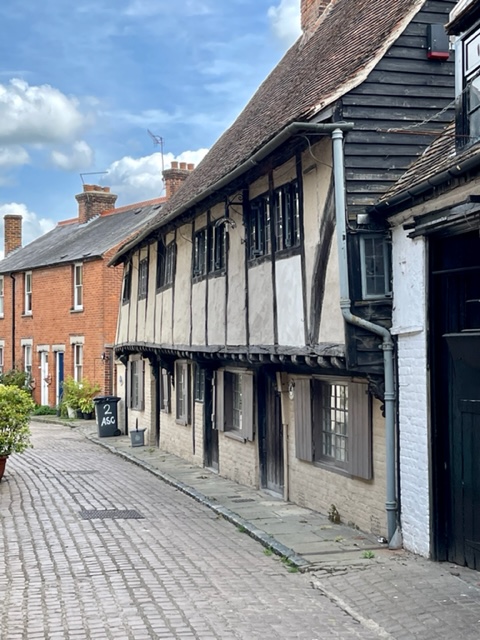

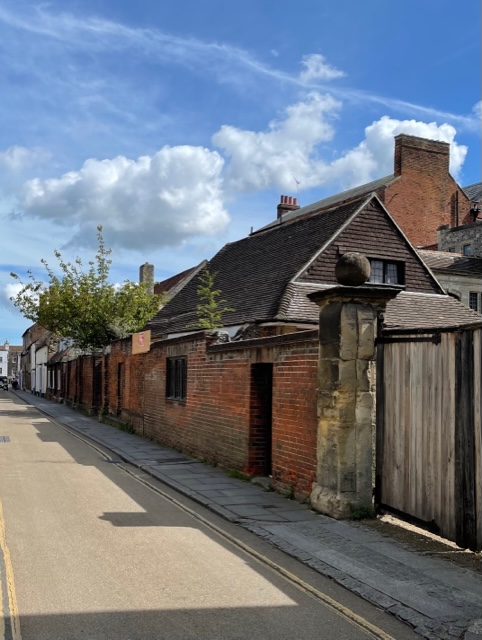
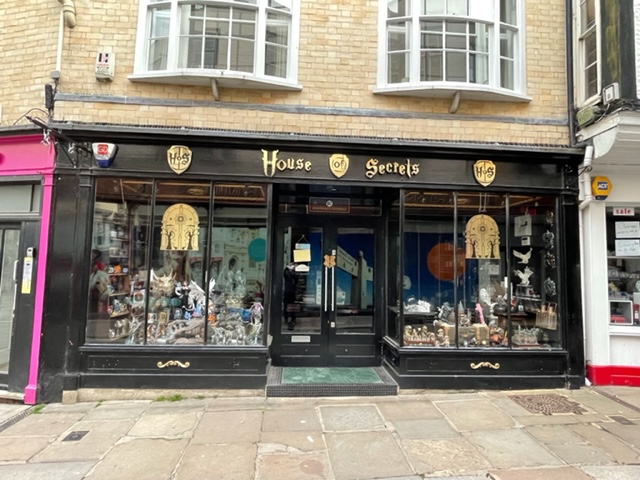
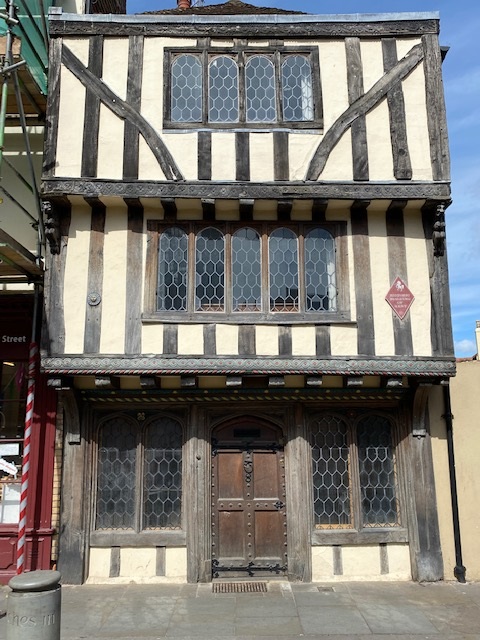
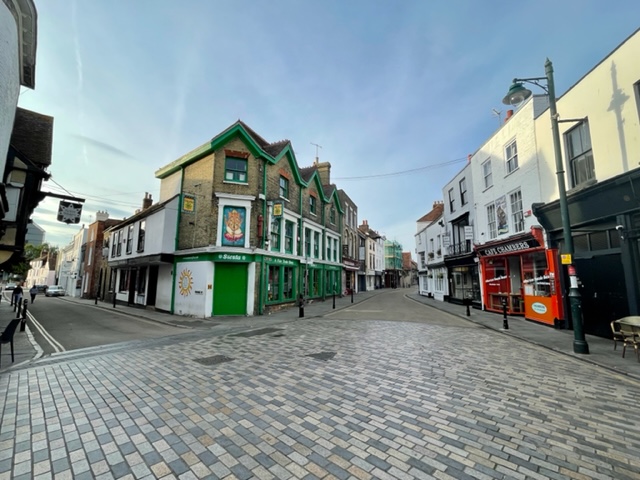
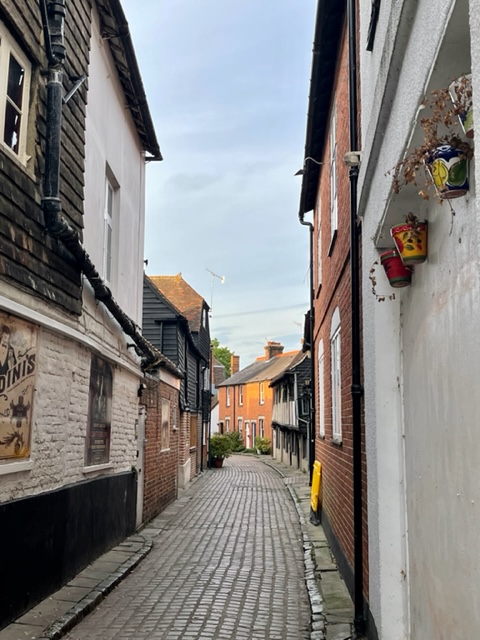
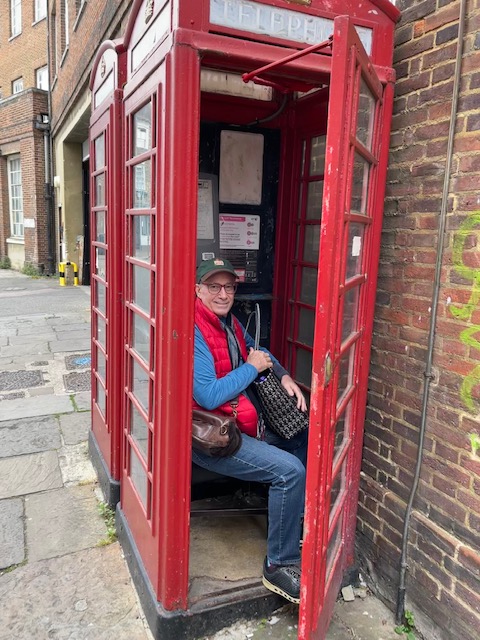


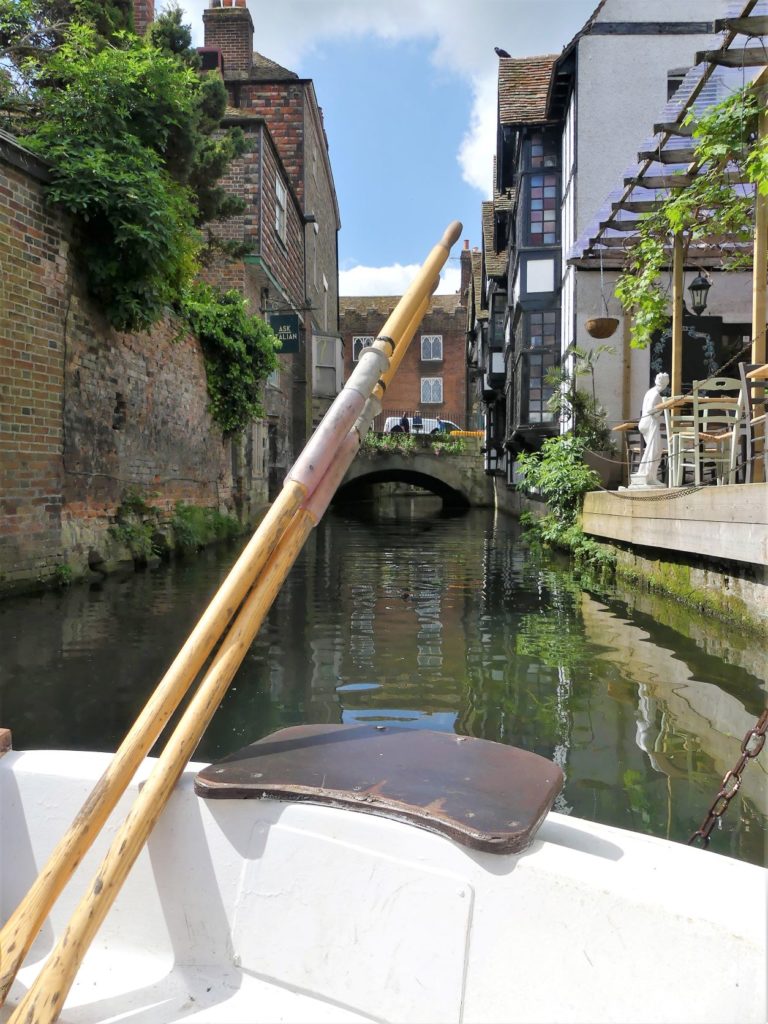

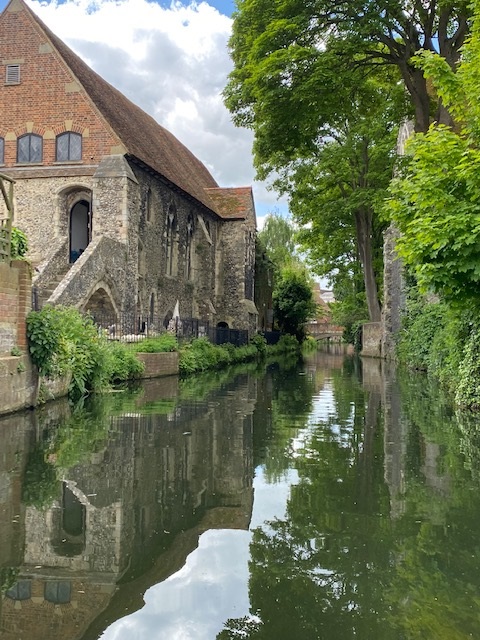

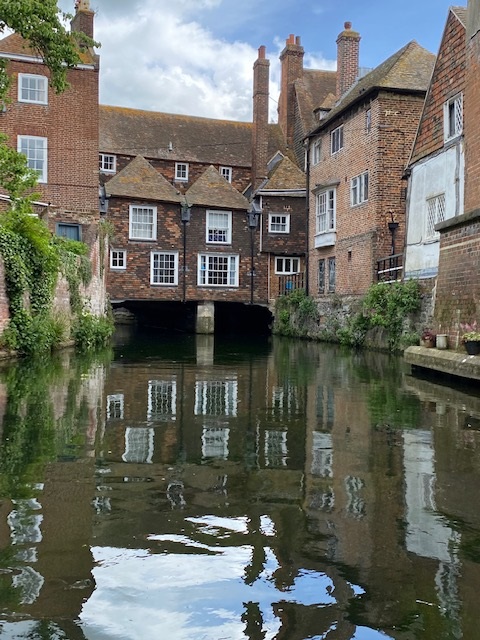

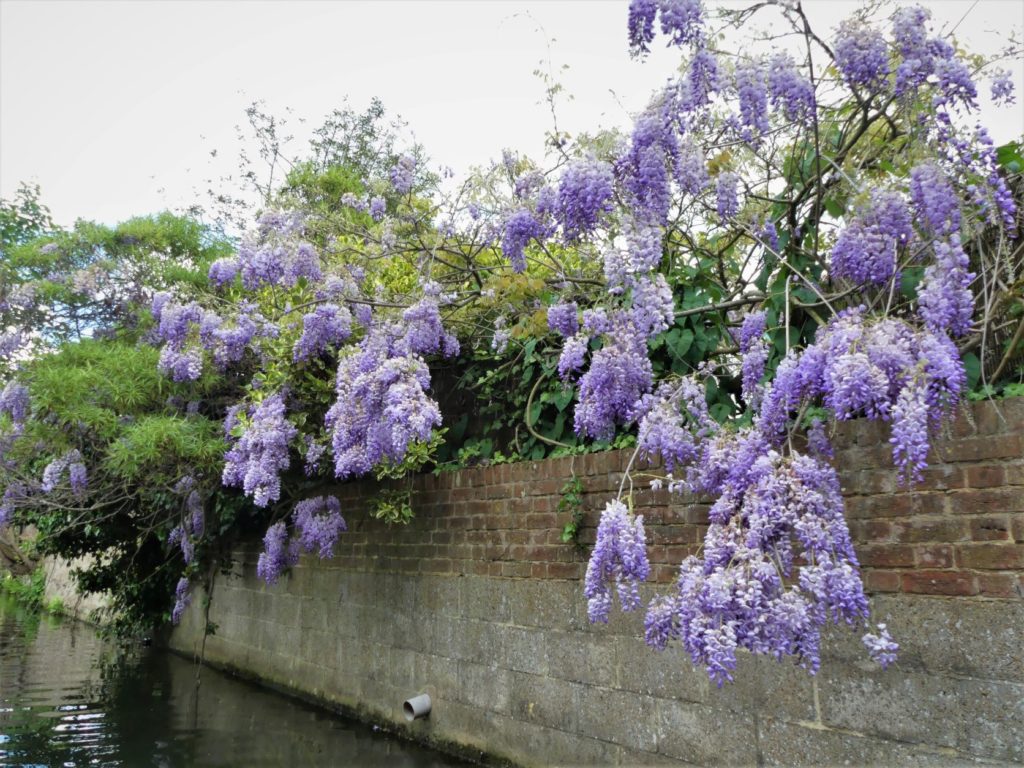

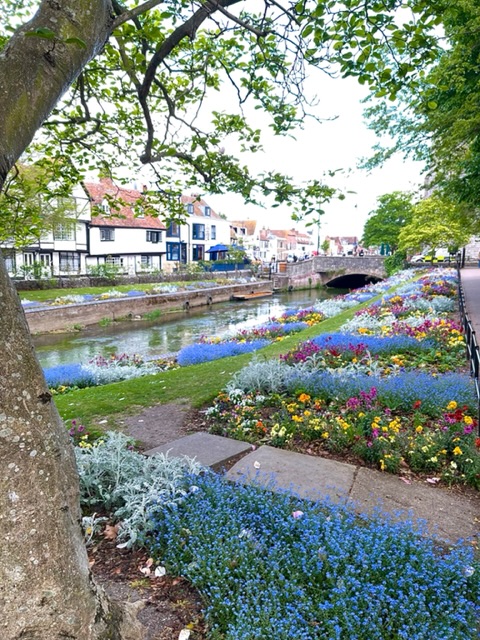
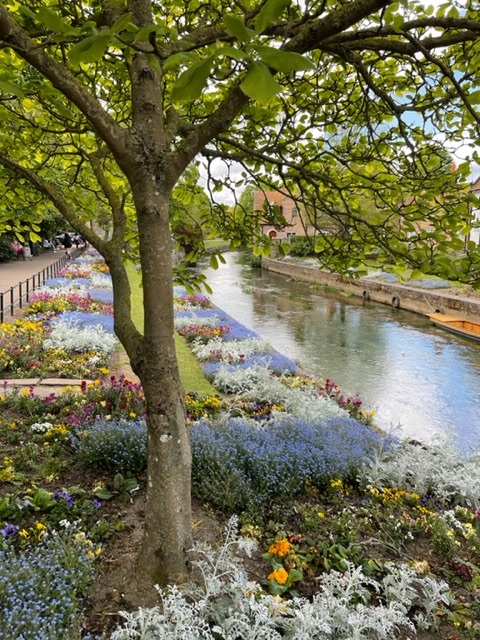







Glad to have you home from your fabulous adventures. Canterbury was one of my favorites, as well.
so enchanting- loving this vicarious trip so far- keep em coming- on last post i WANT that painting of the three ladies- wow!